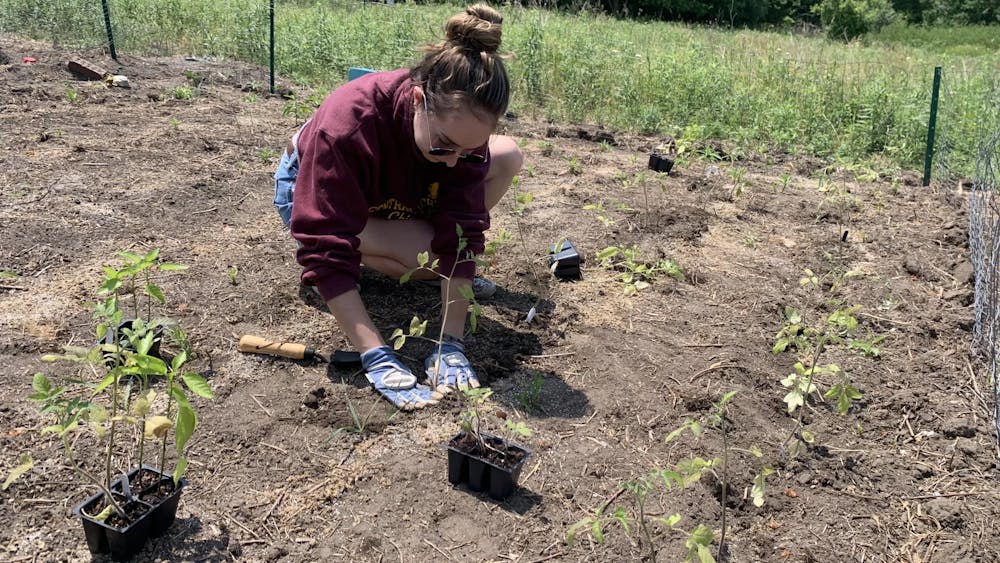Prescription drug policies crack down on abusers, pharmacies to ensure safety
This is the second story in a three-part series on prescription drug abuse within the community of Mount Pleasant and Central Michigan University.
In the fight against prescription drug abuse, policy is one of the major weapons.
According to the Centers for Disease Control and Prevention, only 4 percent of those who abuse prescription pain killers obtain them from a dealer or stranger, while 55 percent get the drugs from a friend or relative. The next largest group, at 17 percent, have the pills they abuse prescribed by a doctor.
Pharmacies everywhere are expected to uphold certain laws and standards when it comes to dispensing prescription drugs. Doctors and physicians are already expected to enter prescribed medications into the Michigan Automated Prescription System so other doctors or pharmacists can ensure that patients are not trying to cheat the system. The DEA and Office of Diversion Control provide guidelines and other resources for pharmacists to better define their responsibilities.
While local Mount Pleasant pharmacies refused to comment, all are expected to adhere to the general laws and guidelines that all pharmacists are expected to follow to ensure the safety of patients and prevent drug abuse.
Many people will create non-existent prescriptions by using computers. When this or other forged prescriptions are discovered, pharmacists must contact the police, the DEA or State Board of Pharmacy.
On a more local level, the residence halls at Central Michigan University are equipped with their own policies in the case of drug abuse or other emergencies.
Michelle Veith, associate director of Residence Life, said drug abuse prevention policies do not differ greatly from any policy designed to keep students safe.
“We treat drug abuse in the residence halls the same way we would treat any concern for a student’s health and safety,” Veith said.
Generally, when there is any concern for a student’s safety or health, Residence Life attempts to provide students with resources, both on and off campus.
The student is also required to meet with a Residence Life counselor, and in severe cases, a student support meeting is organized by the university to discuss helpful options.
“When our staff becomes aware of the use of drugs, our protocol is to involve CMU Police,” Veith said. “Depending on the situation, they could be cited by the police, arrested or referred to the Office of Student Conduct.”
CMUPD Officer Larry Klaus said student incidents of drug abuse are either referred to the Mount Pleasant Police Department through Residence Life or discovered independently by an officer.
"The police would conduct an investigation which upon completion would be referred to the Isabella County Prosecutors office for potential criminal charges," Klaus said. "The Office of Student Conduct can take administrative action in regards to the student’s status which may include a fine, probation or suspension from the institution."
Collaborating frequently with BAYANET, CMUPD officers first work to identify the substance, sometimes sending it to the MSP crime lab for analysis. Once an identification of the drug has been made, further steps toward possible prosecution can be made.
From 2010-12, a total of 322 drug law violations were recorded on campus and referred for disciplinary action. According to Klaus, however, only four or five cases in the last two years have had to do specifically with prescription drug abuse.
"The vast majority of cases which the police department encounters involves alcohol, marijuana and hallucinogenic drugs," Klaus said.
Currently, CMU does not employ anyone to tackle substance abuse prevention, but Residence Life strives to keep students informed through educational programs and by enforcing all policies.
“I would say (drug abuse) is relatively infrequent with marijuana being the bulk of what we see,” Veith said. “Students often don't understand that medical marijuana is not allowed on campus because we receive federal dollars.”
Luckily for students, the CDC shows that they are not one of the groups most at risk for overdose on prescription drugs, which include those of low income, those in rural areas and those with a mental illness or history of prior drug abuse. The most effective step in avoiding a history of abuse, however, is ample prevention.



